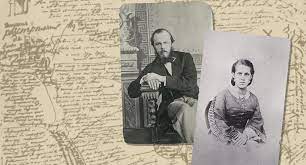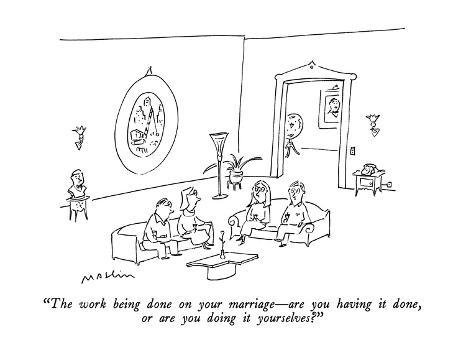For Couples

 Picture a couple sitting apart from each other, arguing and blowing a minor incident out of proportion. One partner’s tone is angry and harsh. The other sighs, reacting with a roll of the eyes or shoulders bracing. Before you know it, they’re embroiled in all too familiar fight—arms crossed, talking over each other, competing to get their point across, and increasingly focusing on what the other person is doing wrong.
Picture a couple sitting apart from each other, arguing and blowing a minor incident out of proportion. One partner’s tone is angry and harsh. The other sighs, reacting with a roll of the eyes or shoulders bracing. Before you know it, they’re embroiled in all too familiar fight—arms crossed, talking over each other, competing to get their point across, and increasingly focusing on what the other person is doing wrong.
As the Eagles 1970’s pop song lamented, “We make it harder than it has to be, and I can’t tell you why!”
 Picture another couple—who has “lost that loving feeling.” They rarely butt heads, but their relationship is like a barren desert. They live parallel lives and continue to grow farther apart. This couple may still share the same house, same bank account, and even the same bed, but they run from the first sign of conflict. And they rarely, if ever, take the risk of directly revealing to each other their true thoughts or what they want or dislike. Nor do they seek to understand more about what’s most import to their partner and why.
Picture another couple—who has “lost that loving feeling.” They rarely butt heads, but their relationship is like a barren desert. They live parallel lives and continue to grow farther apart. This couple may still share the same house, same bank account, and even the same bed, but they run from the first sign of conflict. And they rarely, if ever, take the risk of directly revealing to each other their true thoughts or what they want or dislike. Nor do they seek to understand more about what’s most import to their partner and why.
This couple seems more like “roommates,” secretly wondering, “Do we really belong together?”
 Picture one more couple—whose relationship is mostly satisfying—but occasionally they push a button or two in each other that can be big and loud, and send their relationship reeling for days, even weeks. Generally there’s little conflict to speak of between them, partly because they don’t know how to directly address their differences, so they eventually make peace but sweep their differences under the rug. But now the lump under the rug is getting bigger, and they are starting to regularly trip over it.
Picture one more couple—whose relationship is mostly satisfying—but occasionally they push a button or two in each other that can be big and loud, and send their relationship reeling for days, even weeks. Generally there’s little conflict to speak of between them, partly because they don’t know how to directly address their differences, so they eventually make peace but sweep their differences under the rug. But now the lump under the rug is getting bigger, and they are starting to regularly trip over it.
![]()
![]() Every couple has differences!
Every couple has differences!
When a couple first meets and fall in love, the focus tends to be on what they have in common. This is a normal and important stage of couples development. Similarities and shared interests are part of what brought them together. Sameness gets emphasized and differences tend to go on “vacation.”
In this first enchanted phase of the relationship, a couple can’t get enough of each other. It’s electric, exciting and new. Some describe it as the “perfect match” and they feel like they can make anything work. The focus is on the “Us” and their shared values and interests that make them “compatible.”
Again, this is an important stage for a couple to go through. Some maintain this first stage longer than others, but no couple can sustain this stage forever.
As novelty of new love wears off, each partner starts to re-emerge as individuals. Differences of desire that went underground when they first met begin to reappear. Imperfections and quirks in the other start to become more prevalent. One partner is a spender. One is a saver. One is a planner. The other is more spontaneous. One is more neat and organized. The other is okay with some clutter. One likes to go to bed early while the other is a night owl. One is more of a do-it-yourselfer. The other likes to hire home projects out to a professional.
Each partner naturally starts to express more of their individual opinions, interests and values. One partner may want to spend more time alone or with different friends. One may want to spend an evening together while the other wants to chill out and watch football. One may want to travel more; the other is more of a home body. One might be interested in living in the country where the other is more drawn to live in the city.
Experiencing differences in tastes of music, money, food, movies, vacations, sex, etc., can be a harsh awakening for a couple, and it can seem like it’s threatening their sense of “Us.” This can be an especially difficult time when couples haven’t replaced it with something deeper.
Couples who can rise up and do the work of managing the stress of holding different values and interests without losing themselves or the relationship, move through this important “stage of differentiation” and go on to enter into deeper levels as a couple. Those that don’t, remain stuck—either fighting over their differences or ignoring the elephant in the room all together with the hopes it will somehow work out on it’s own—which it rarely does.
The unhealthy patterns that set in when a couple remains stuck are what wear most couples out. Many turn to divorce. Just as many give up or settle for a miserable or less than satisfying relationship. Beneath the waves of their growing arguments or conflict avoidance exist strong competing currents. Insecure attachment styles collide out of dysregulated states. More than most realize, adverse early life experiences and protective threat response states are influencing and feeding their unhealthy patterns.
It’s not that a couple becomes entirely polar opposites of each other. Many see eye to eye in some of their core values and interest. Arguing couples may even go through periods where they call a truce, and think they have turned a corner. But peace is usually short lived. Eventually, a couple hits their wall of differences again, and the stress of not being able manage them takes center stage.
Differences don’t equal incompatibility.
Differences in a relationship are not the kiss of death. Again, differences are normal between two individuals who come from two different family of origins and socioeconomic, cultural backgrounds. The problem is that partners often consciously or unconsciously view thoughts, tastes and interests other than their partners as a threat to their connection, and don’t know how to effectively sit with the tension of what’s important to each other and why. Many fear that revealing their true thoughts and feelings to their partner will only result in more hurt and separation.
Again, what most struggle to understand is that ongoing patterns of conflict or retreat are usually a lot more about the stage of development a couple is stuck in and how their physiology and attachment styles keep them “hooked” in like a broken record to well-worn relational ruts. Few understand how these overly protective patterns keep them from the kind of vulnerability that can take their relationship to deeper levels and sustain them through the bumps and lulls that invariably come.
I use the Developmental Model for Couples, Somatic Experiencing and Attachment informed therapy to support shifts in a couple’s nervous systems and relationship patterns that encourage an openness to change, to connect, and to communicate differently about their differences while remaining true to what’s important to them as individuals.
Learning healthy differentiation is both an internal process and an interpersonal process. Those couple’s who regularly practice differentiation learn a lot about themselves and each other, invaluable information shared between two best friends that help them build and maintain a “congruent memory” of who their partner actually is. It is the capacity to hold on to and draw from this vivid picture of how they’ve been there for each other, had each others backs, and the connection they shared together that helps enables them to weather future rocky and dry patches of their relationship.
How is couples therapy different from individual therapy?
Couples are more complex than an individual, and for that reason, couples work is different. Individual therapy will focus on one person’s internal state and their reactions to an experience, both today and in the past. But when there’s a couple in the room there are two people, two nervous systems, two attachment styles, and a third entity, that is the dynamic patterns and development of their relationship. And for that reason, working with couples requires a broader focus.
Ways I might approach couples work differently than individual therapy might be longer sessions (90 minutes) and/or an initial intensive (click here to learn more). This gives room to identify and pay special attention to the dysregulated pattern(s) that leave a couple stuck, and your attunement—the nature of the unspoken connection between the two of you. The goal is to help shift both of you out of threat response states (where you no longer have access to the parts of your brain that can learn new ways of communicating and open up and resolve personal differences and relationship problems) and to invite each partner to invest in taking risks to change something about themselves (not change their partner) that will move the relationship forward toward deeper experiences you both truly want.
Rather than remaining stuck and spiraling in a cycle of reacting off each others spoken or unspoken differences, we will work towards setting the conditions to learn how to talk differently with each other where each person feels heard, known, and valued.
Sometimes the focus of couples therapy will land between you and your partner. We will practice the skill of talking directly and vulnerably about your most important thoughts, feelings and desires.
Couple’s work involves individual work too, helping you discover you’re own unique path towards greater levels of self-awareness, self-accountability, self-regulation, and self-disclosure. Far too often people are tempted to believe that the answer to marital conflict is to get their partner to change when their real power to promote healthy change in their relationship starts by focusing on their “own yard” and growing as individuals first.
It’s not easy, but possible.
Disney’s remake of the classic film Beauty and the Beast offers a great fictional example of the kind of transformation that a couple with huge differences can begin to experience in their relationship. In case you’re unfamiliar with the basic plot, Belle, the book-loving dreamer, and a handsome prince turned into a Beast, come from two polar opposite backgrounds. While fate forced this unlikeliest of couples together, they are so different that, at first, neither can stomach to be in the other’s company.
As they bump up against each other’s differences, they are not emotionally safe to each other. They don’t share their hearts. Nor do they listen well or value the other person’s feelings and point of view. Instead, they yell, interrupt, take things personally, talk over each other, point out the other’s faults, and even sulk at times.
Needless to say, they related to each other out of threat responses and had no idea how to tolerate their differences or value the other person’s struggles and concerns.
As the story unfolds, however, a stunning shift starts to occur between them. Watch the following short clip of Belle and Beasts hearts beginning to warm towards each other
Wait. What just happened?
As others around them start to notice something shifting between the couple, Belle ponders out loud about Beast, “I wonder why I didn’t see it there before?”
Belle asks an excellent self-reflective question. Part of the answer is that neither she or Beast could see what had always been there in the other (and potentially between them)—at least, not in a threat response state of fight/flight they were stuck in towards each other. In that state, they could only see each other as threats and their differences as insurmountable.
A big part of what opened their eyes and turned their relationship in a healthier direction is what happened in each of them first. It included the Beast’s heroic attempts to protect Belle from a pack of blood thirsty wolves as she fled the castle to get away from him. Beast suffered grave injuries saving her life, and rather than leave him out in the woods to die, Belle, in turn, took a relational risk. She assisted him back to castle, patiently tended to his wounds, and thanked him for rescuing her.
Their transformation wasn’t the result of coercing the other person to change or see things their way. Instead, they switched their focus from changing the other to changing themselves. Belle and Beast energized a new awakening because they both invested in risky, concrete steps to relate to other differently—investments that paid off. Slowly they began to shift out of a threat response towards each other. They started to have more access to the state of regulation and connection (where they could see and experience each other in ways they hadn’t before).
It wasn’t easy, effortless, or even enjoyable for either one of them, but when they both were willing to focus on what they each could do differently they slowly started to create a better relationship.
Belle and Beast’s story of transformation illustrates how each person taking responsibility for themselves and willingness to take little but meaningful relational risks has the power to help each partner manage their differences and feel more regulated, empathetic, and connected. And it was there, from that new and growing state of regulation, that they had greater access to experience each other as intimate allies versus threatening enemies.

Perhaps one of the most memorable accounts of a couple with significant differences experiencing a lasting, happy marriage comes from Anna Dostoevsky, the wife of the famous Russian novelist, Fyodor Dostoyevsky.
They too, were an unlikely match, with nearly a 25 year age gap between them. Anna would later write that she and her husband were of quite contrasting character, different temperaments, different bents, and completely dissimilar views. Yet they never tried to change one another, which she believed empowered the couple to live in harmony.
After her husband’s passing, a devoted Anna reflected,
“We always remained ourselves, in no way echoing nor currying favor with one another, neither of us trying to meddle with the other’s soul, neither I with his psyche nor he with mine. And in this way my good husband and I, both of us, felt ourselves free in spirit.”

Changing your marriage starts with changing you, not your partner.
Working through your differences and conflict isn’t easy. It’s hard work. It’s challenging and sometimes messy, but it is doable and rewarding.
In the safe confines of couple’s therapy, the two of you can change yourselves and the relationship by slowing down and learning to regulate your nervous systems and gradually open up in ways you haven’t been able to pull off without assistance.
Therapy with me may be a good fit if you can:
- Resist the temptation to believe that your partner is the primary source of your unhappiness.
- Shift your focus from changing your partner to doing things differently yourself.
- Be open to better understand and work on the stresses each of you are experiencing in the relationship in a way that does not involve blaming or criticizing the other for the distress that you’re in.
- Agree that each of you contribute to the distress in your relationship and the quality of your relationship starts with each of you as individuals learning something new and doing something different.
- Accept that differences don’t mean incompatibility or a threat to your connection.
- Embrace the idea that your relationship is a journey of development.
Contact me today to set up an appointment. Let’s begin exploring what is possible for you, your partner, and your relationship.

